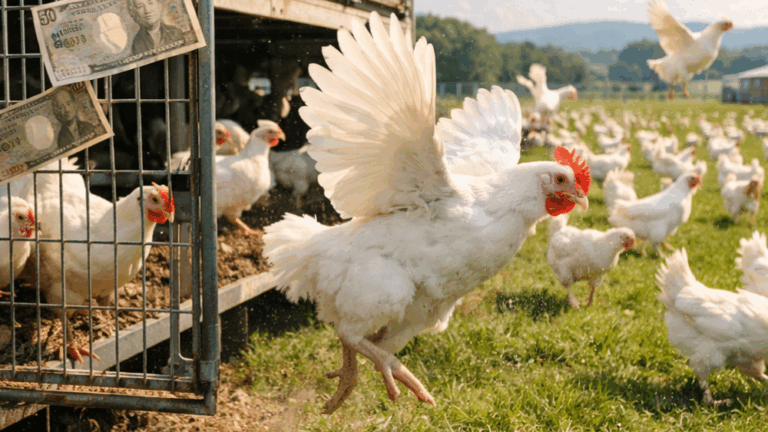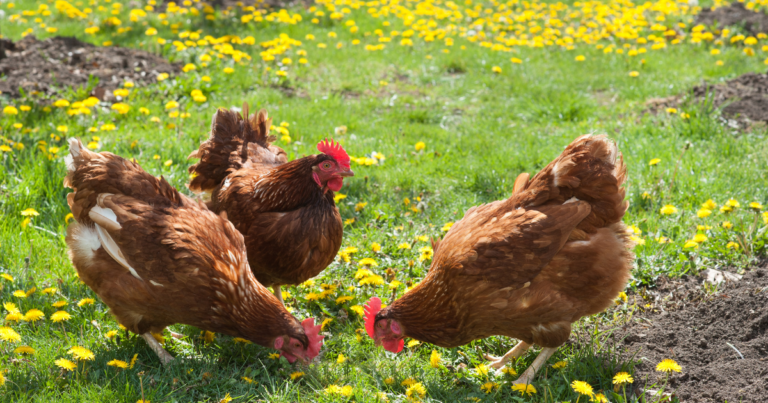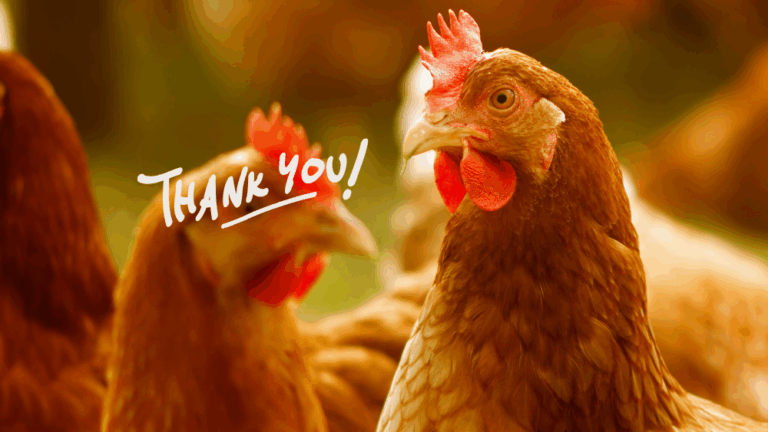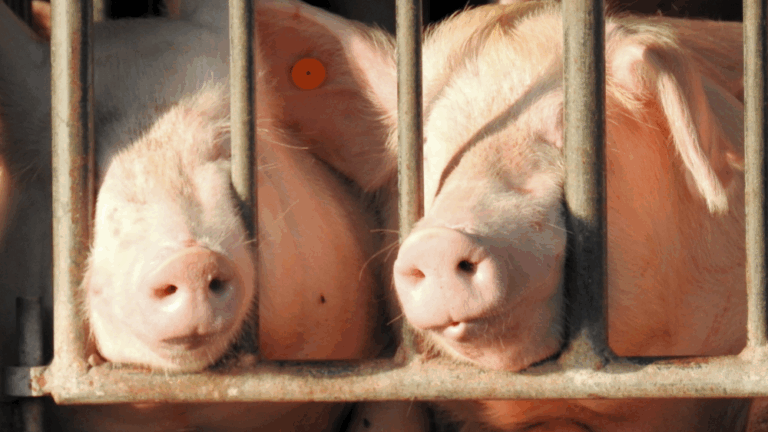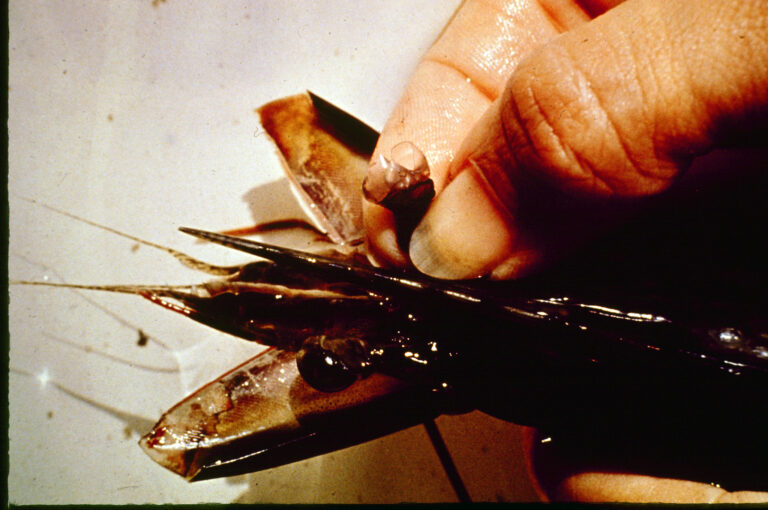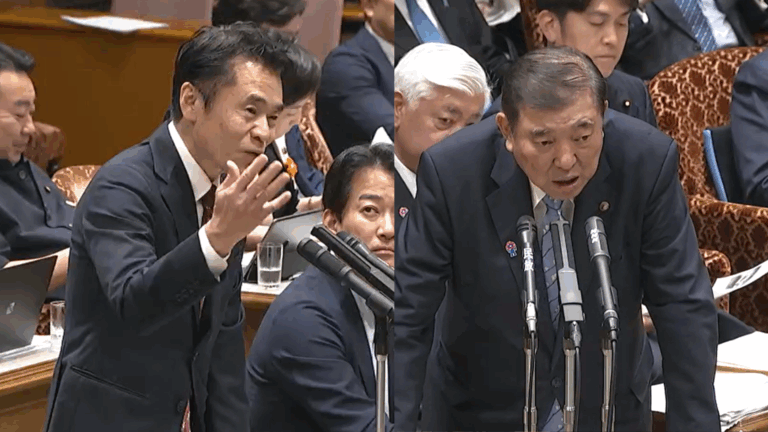OIE (World Organisation for Animal Health) in September 2019 prepared and presented the 3rd draft of the “Animal Welfare and Laying Hen Production Systems”.
The development of the “Animal Welfare and Laying Hen Production Systems” has been under discussion since 2017, and especially for the second draft last year, there were embarrassing opinions from Japan that the animal welfare standard should be significantly lowered. Similar opinions were expressed not only by Japan but also by the United States, but Japan’s strong and backward attitude seems to have left a strong impression in the world.
In response, 3rd draft was created, but the content was reduced to a level that would convince the United States and Japan.
For example, installation of perches and nesting areas was a requirement that access “should be provided” in the 2nd draft, but this time it was only recommended that it “is desirable”.
In addition, for example, a sentence that did not exist until the 2nd draft, “Good welfare outcomes for layer pullets and pullet laying hens can be achieved in a range of housing systems“, was suddenly added. It was as if Japan’s opinions had gotten incorporated, leading to a very disappointing result.
On December 18, the OIE Liaison Council (committee on OIE in Japan) was held, and in response to the above, 8 animal protection groups jointly submitted in advance a request including scientific reasoning. The full text of the request is included at the bottom. And at the OIE Liaison Council, members representing each position exchanged opinions. (Please note that the following remarks have been transcribed based on notes, and are not exactly as spoken but are summaries.)
Japan Livestock Technology Association demands further reduction of animal welfare standards
First of all, the first to start the discussion and state a surprising opinion was international relations director Mr. Nao Isobe of Japan Livestock Technology Association, which has obtained a large amount of subsidy from the Ministry of Agriculture, Forestry, and Fisheries (MAFF) and is preparing surveys and documents on animal welfare. He said,
In my opinion, it would be better to lower the tone regarding access to perches and nesting areas from “desirable” to something like “may be given”.
The reason was that perches and nesting areas cannot be cleaned and disinfected, increasing the risk of bacterial infection. Mr. Isobe reiterated twice that animal welfare level should be lowered. He seemed to want to argue that taking into consideration animal habits would increase the risk of infectious diseases, but it was a completely unscientific opinion and one that was in direct opposition to the world trend. With or without perches and nesting areas, the risk of illness increases if not properly managed. That’s the same with battery cages or enriched cages (which have perches and nesting areas). If you are looking closely, you should know how filthy the battery cages are. It is clear from comparing multiple studies that the incidence of Salmonella in cages is higher than that in cage-free rearing, even a poultry information magazine agrees *1. And with the red mite incidence also increasing, his opinion does not reflect reality at all. Hearing his opinion, it seems irrational that Japan Livestock Technology Association composes animal welfare guidelines with tax money and MAFF tries to disseminate them. It makes us convinced that the “Rearing Management Guidelines Reflecting Animal Welfare Concept” are being composed without any objectivity or scientific basis. No wonder… we’re tempted to say, but the concern is that MAFF and the Livestock Technology Association are almost one and the same. What Mr. Isobe said could be the opinion of the Japanese government.
Fortunately, other members basically didn’t have opinions in agreement with Mr. Isobe.
Many committee members recognize the importance of animal welfare
Professor Emeritus Tomoo Tanaka of Azabu Veterinary University said,
In the current global trend and in Europe, the opinions in the 2nd proposal are more dominant, but the fact that Japan’s opinion has been mostly accepted this time is itself a big deal. Isn’t it sufficient that all that has been compromised as the greatest common denominator…? This time I think this draft is fine.
Then he added the importance of freedom of behavior and the need to go with the 3rd draft.
Keisuke Amagasa, co-chair of a certified nonprofit organization Japan Consumers Federation, stated from the perspective of the consumers,
I’m afraid that “a range of housing systems” as currently written would be very ambiguous. For example, there must be words like “such that natural behavior is possible”. Also, regarding dust bathing, it is a highly motivated biological behavior like other behaviors, and I think a certain level of description should be necessary.
Animal welfare is becoming more important in food safety; I feel that it has become such an era. When discussing food safety, in addition to talking about only infectious diseases, I think it’s important to recognize that it’s the healthy animals that lead to food safety. I would like you to work on animal welfare to some extent as something with effectiveness.
Professor Emeritus Yoichi Matsuki of Nippon Veterinary University said that free-range rearing should be specifically mentioned, and regarding the current draft proposal, while the global trend is to abolish battery cages, “a range of housing systems” sounds like anything is ok, and at a time when the global trend is to try to follow the natural behaviors of farm animals, he strongly emphasized that OIE should not include such statement.
In addition, he said,
With good management, perches and nesting areas should rather be accessible, that is, should be present. Instead of eliminating their existence themselves, I think the direction should be that they are to be accessed so it’s necessary to have such things, and that they should be provided, with appropriate management being a given.
The industry agrees with the draft… but surprising conception again!
Most notable was the statement by Mr. Shogo Akita, chief executive officer of Akita Foods Co. Ltd. and vice chairman of Japan Poultry Association, who attended as an extraordinary member on behalf of the industry. We listened in the last time as well and heard this statement by Akita Foods’s vice president, “Through enhanced breeding, chickens have come to not perch on perch trees” and was so shocked and almost fell off the chair, but this time was also quite comparable…
As expected, the first point was that it must be cages because of the culture of eating raw, and it must be cages in hot and humid Japan.
Being able to eat raw only in Japan is because the eggs are washed, and has nothing to do with the rearing system. Also, high temperatures and high humidity kill many chickens in battery cages. Last year especially, a large number of animals died in battery cages in open poultry houses. This is also due to ventilation and rearing density rather than the rearing system. In addition, he also said “We were rearing breeder chickens cage-free until about 30 years ago, but the survival rate was inevitably worse in cage-free rearing and many chickens died”, implying that Akita Foods keeps even the breeder chickens (parent birds used to lay eggs who become egg-laying hens) in cages. In the end, many of the deaths from cage-free rearing are due to lack of proper management of the flooring (litter), perch trees, and nest boxes, and there is no necessity to mix their own lack of skills with this discussion.
And what really turned us over this time was that he said,
Regarding perch trees, I think that if perches are provided at night more chickens will probably perch, but in the case of cages, I think that grabbing the cage plays the role of perch trees.
Apparently unable to stay silent about this, animal behavior researcher Professor Tanaka firmly rebutted,
As a researcher of chicken behavior for many years, that grabbing the cage floor may be a substitute for perches is completely incorrect. If they are provided even in small cages, they will perch at night, but it is difficult to perch because there is not enough height and they’d hit their heads. If there is height and perches are provided, almost all will perch. They do have such desires.
That was the most relieving moment of this year.
Fortunately, while Mr. Akita agreed with Mr. Isobe, he said he agrees (with the current draft) because it’s in a much better condition than the previous time.
Pulling the producers further back was the position of Japan Livestock Technology Association! We are again surprised.
Pay attention to comments by the government.
Regarding the opinion about “a range of housing systems”, MAFF explained that it’s not that that any kind of rearing system is acceptable, but the code is being established with the idea of taking a look at the animals in given rearing methods and determining which animals meet the animal welfare index (Merkmal), and making improvements if not met. However, this idea is sufficiently understood if there was no statement like “Good welfare outcomes for layer pullets and pullet laying hens can be achieved in a range of housing systems”, and its inclusion has unmistakably diminished that idea.
Japan’s comments are expected to be published in January next year, probably visible to the citizens. We hope at least that the opinion is not to lower the standards any further.
Full text of request from us animal protection organizations
MAFF Food Safety and Consumer Affairs Bureau, Animal Health Division, Director Mr. Norio Kumagai,
MAFF Food Safety and Consumer Affairs Bureau, Animal Health Division, International Animal Health Affairs Officer Mr. Masatsugu Okita,
MAFF Food Safety and Consumer Affairs Bureau, Food Safety Policy Division, International Standards Office, International Standards Specialist Ms. Mika Haruna,
MAFF Agricultural Production Bureau, Livestock Production Promotion Division, Director Mr. Shirou Inukai,
MAFF Agricultural Production Bureau, Livestock Production Promotion Division, Livestock Production Technology Officer Mr. Akinobu Inuzuka,
We are animal welfare organizations in the country that raise public awareness about animal welfare and make recommendations to corporations and producers.
Regarding the draft “Animal Welfare and Laying Hen Production Systems” being discussed at the World Organisation for Animal Health (OIE), we feel much regret that Japan last time submitted opinions to lower animal welfare.
Animal welfare is related to our safety and security as well as sustainability of the society, and its importance is growing rapidly. In that context, the actions taken by the Japanese government were only for the poultry farmers, and not for the citizens at all. At the committee meeting, there were opinions from committee members present on behalf of consumers that animal welfare should be raised further, but those opinions have been treated as if they had never existed. These actions that betray consumers should be rectified.
By the Japanese Government’s response, it is stating that the level of animal welfare in Japan cannot reach the world level, and the position of domestic poultry farming may be placed in a difficult position internationally. The low consciousness of Japan’s efforts have even been pointed out to us NGOs by NGOs in other countries.
To escape from such a negative position, we urge not to give opinions to lower the standards of the proposals presented this time, and moreover make efforts to improve animal welfare.
Regarding the “Animal Welfare and Laying Hen Production Systems” proposal, we would like to suggest the following comments for submission from Japan. We request that you work toward creation of appropriate animal welfare standards.
Texts in red are to be added or modified.
Texts in light blue are to be removed.
Blue texts indicate explanations and rationales.
Scientific rationales are attached, but please inform if insufficient.
* As the Japanese translations were done by the Animal Rights Center Japan, there may be inconsistencies in word choices with what MAFF has done. Thank you for your understanding.
Request 1: Reflect that dust bathing, like other behaviors, is an important “motivated” behavior
Article 7.Z.3
2. Behaviour
a) Dust bathing
Dust bathing is a complex motivated behaviour providing body maintenance benefits. During dust bathing, layer pullets and laying hens remove loose substrate material, such as litter, through their feathers. This behaviour helps remove stale lipids dirt [van Liere and Bokma, 1987], which contributes to the maintenance of plumage condition. This helps to regulate body temperature and protect against skin injury. Reduced dust bathing behaviour in the flock may indicate problems with substrate or range quality, such as the substrate or ground being wet or not friable [Olson and Keeling, 2005; Van Liere and Bokma, 1987]. The demonstration of complete sequences of dust bathing may be associated with positive affect [Widowski and Duncan, 2000].
Explanation:
Dust bathing, like nesting, perching and foraging is driven by strong, biological urges and triggered by both external and internal factors. Failure to label it as a “motivated behavior” like the others seems to indicate it is not as important for hen welfare. Dust bathing maintains plumage condition and removes red poultry mites. Because the hens enjoy it, the behavior is a way of improving their quality of life. In a housing system that is designed around the behavioral needs of hens, dust baths should be provided. Thus it is important to indicate that it is a motivated behavior, like nesting, perching and foraging.
References:
Duncan, I. J.H., Widowski, T.M., Malleau, A.E., Lindberg, A.C., Petherick, J.C. (1998) External factors and causation of dustbathing in domestic hens. Behavioural Processes 43: 219-228.
Olsson, I.A.S. and Keeling, L.J. (2005) Why in earth? Dustbathing behaviour in jungle and domestic fowl reviewed from a Tinbergian and animal welfare perspective.Applied Animal Behaviour Science 93: 259-282.
Vestergaard K. 1980. The regulation of dustbathing and other behaviour patterns in the layinghen: a Lorenzian approach. In: Moss R (ed.), The Laying Hen and its Environment (The Hague, Netherlands: Martinus Nijhoff, pp. 101-20).
Vestergaard K.1982. Dustbathing in the domestic fowl: diurnal rhythm and dust deprivation. Applied Animal Ethology 8:487-95.
Vestergaard KS,Damm BI, Abbott UK, and Bildsoe M. 1999. Regulation of dustbathing in feathered and featherless domestic chicks: the Lorenzian model revisited. Animal Behaviour 58(5):1017-25.
Vestergaard KS, Skadhauge E, and Lawson LG. 1997. The stress of not being able to perform dustbathing in laying hens. Physiology and Behavior 62(2):413-9.
Request 2: Remove “Good welfare outcomes for layer pullets and pullet laying hens can be achieved in a range of housing systems” which can be interpreted as any system is acceptable.
Article 7.Z.5
Good welfare outcomes for layer pullets and pullet laying hens can be achieved in a range of housing systems. In housing systems without stimuli, in which natural motivated behavior of the layer pullets and laying hens cannot be exhibited, good welfare outcomes cannot be achieved even with proper management.
Explanation:
The added sentence could cause misunderstanding that any housing system would provide good outcomes, is inconsistent with other articles, and should be removed. Systems such as battery cages have various drawbacks and do not provide good welfare outcomes. Cages restrict hens’ movements, which adversely affect skeletal health and prevent natural motivated behaviors such as nesting, dust bathing, foraging, and perching.
Further, chapter 7.1 of the Terrestrial Animal Health Code states,
“4) The physical environment should allow comfortable resting, safe and comfortable movement including normal postural changes, and the opportunity to perform types of natural behaviour that animals are motivated to perform.”
and,
“Good animal welfare requires disease prevention and appropriate veterinary care, shelter, management and nutrition, a stimulating and safe environment, humane handling and humane slaughter or killing.”
and housing systems that do not provide the opportunity to exhibit motivated natural behaviour and environments without stimuli should be avoided, and the sentence should be removed to be consistent with this chapter. Also, it is necessary to indicate that with some housing systems such as battery cages, even if proper management is attempted, certain positive welfare outcomes cannot be achieved.
References:
Cooper, J. and M.J. Albentosa (2003). Behavioural Priorities of Laying Hens. Avian and Poultry Biology Reviews. 14. 127-149. 10.3184/147020603783637508.
Cronin, G.M., Barnett, J.L. and Hemsworth, P.H. (2012). The importance of pre-laying behaviour and nest boxes for laying hen welfare: a review. Animal Production Science 52: 398-405.
D Jong, I.C., Wolthuis-Fillerup, M. , Van Reenen, C.G. (2007) Strength of preference for dustbathing and foraging substrates in laying hens. Appl. Anim. Behav. Sci. 104, 24-36.
Hartcher, K.M., Jones, B. (2017). The welfare of layer hens in cage and cage-free housing systems. World’s Poultry Science Journal 73:782-767.
Request 3: Require provision of dust bathing areas
Article 7.Z.10
Dust bathing areas
Access to friable, dry substrate to encourage dust bathing is desirable should be provided. When provided, dust bathing areas should be designed and positioned to encourage dust bathing, allow synchronised behaviour, prevent undue competition and not cause damage or injuries. Dust bathing areas should be easy to inspect and maintain [Weeks and Nicol, 2006].
Explanation:
Hens have a high necessity for a habitat with litter, spending most of their time pecking and scratching the ground. Searching for food can be effective in preventing pecking that cause injury. Hens’ behavioral needs cannot be met without good litter.
References:
Widowski TM and Duncan IJH. 2000. Working for a dustbath: are hens increasing pleasure rather than reducing suffering? Applied Animal Behaviour Science 68(1):39-53.
Dana L. M. CampbellMaja MakagonMaja MakagonJanice C SwansonJanice C SwansonJanice M SiegfordJanice M Siegford. 2015. Litter use by laying hens in a commercial aviary: Dust bathing and piling September 2015Poultry Science 95(1)
Request 4: Require foraging areas (areas to fulfill hens’ desire to search)
Article 7.Z.11
Foraging areas
Access to substrate that encourages foraging behaviour activity is desirable should be provided. When provided, foraging areas should be designed and positioned to encourage synchronised behaviour, prevent undue competition and not cause damage or injuries. Foraging areas should be easy to inspect and maintain.
Outcome-based measurables include: foraging behaviour, incidence of diseases, infections and infestations, injurious feather pecking and cannibalism, injury rate and severity, and spatial distribution.
Explanation:
Hens have a very high necessity for a habitat with litter, spending most of their time pecking and scratching the ground. Searching for food can be effective in preventing pecking that cause injury. Hens’ behavioral needs cannot be met without good litter.
References:
Gunnarsson S, Matthews L.R, Foster T.M, and Temple W. 2000. The demand for straw and feathers as litter substrates by laying hens. Applied Animal Behaviour Science 65:321-330.
Aerni, V. El-Lethey, H. & Wechsler, B. (2000). Effect of foraging material and food form on feather pecking in laying hens. British Poultry Science 41(1).
Huber-Eicher, B and Wechsler B (1998). The effect of quality and availability of foraging materials on feather pecking in laying hens. Animal Behaviour 55(4): 861.
De Jong, I and Wothuis-Fillerup, M. (2007). Strength of preference for dustbathing and foraging substrates in laying hens. Applied Animal Behaviour Science 104(1): 24.
Dawkins MS. 1989. Time budgets in Red Junglefowl as a baseline for the assessment of welfare in domestic fowl. Applied Animal Behaviour Science 24:77-80.
Request 5: Require provision of nesting areas
Article 7.Z.12
Nesting areas
Access to nesting areas is desirable should be provided. When provided, nesting areas should should be built of suitable materials, and designed and positioned to encourage nesting, prevent undue competition and not cause damage or injuries. Nesting areas should be easy to inspect, clean and maintain.
Outcome-based measurables include: incidence of diseases, infections and infestations, injurious feather pecking and cannibalism, injury rate and severity, nesting, performance (mis-laid or floor eggs), and spatial distribution.
Explanation:
Nesting is a behaviorally necessary activity for hens, which is very well documented in scientific literature. Without a suitable place to lay eggs, hens are stressed. Before spawning, hens behave in a quest for a safe and comfortable nest. It has been found that sometimes nests are given priority over food during hunger. It is strongly recommended that bird boxes or nesting areas be provided in remote locations.
References:
Follensbee ME, Duncan IJH, and Widowski TM. 1992. Quantifying nesting motivation of domestic hens. Journal of Animal Science 70(Suppl.1):164.
Cooper JJ and Appleby MC. 2003. The value of environmental resources to domestic hens: a comparison of the work-rate for food and for nests as a function of time. Animal Welfare 12(1):39-52.
Duncan IJH. 1970. Frustration in the fowl. In: Freeman BM and Gordon RF (eds.), Aspects of Poultry Behaviour (Edinburgh, Scotland: British Poultry Science Ltd, pp. 15-31).
Baxter M. 1994. The welfare problems of laying hens in battery cages. The Veterinary Record 134(24):614-9.
Wood-Gush DGM. 1972. Strain differences in response to sub-optimal stimuli in the fowl. Animal Behaviour 20(1):72-6.
Yue S and Duncan IJ. 2003. Frustrated nesting behaviour: relation to extra-cuticular shell calcium and bone strength in White Leghorn hens. British Poultry Science 44(2):175-81.
Wood-Gush DG and Gilbert AB. 1973. Some hormones involved in the nesting behaviour of hens. Animal Behaviour 21(1):98-103.
Duncan IJ. 1998. Behavior and behavioral needs. Poultry Science 77(12):1766-72.
Freire R, Appleby MC and Hughes BO. 1996. Effects of nest quality and other cues for exploration on pre-laying behaviour. Applied Animal Behaviour Science 48:37-46.
Meijsser FM and Hughes BO. 1989. Comparative analysis of pre-laying behaviour in battery cages and in three alternative systems. British Poultry Science 30:747-760.
Request 6: Require provision of perches
Article 7.Z.13
Perches
Access to perches is desirable should be provided. When provided, perches should be built of suitable materials, designed, elevated and positioned to encourage perching by all layer pullets and laying hens, prevent undue competition, minimise keel bone deformation, foot problems or other injuries, and to ensure stability during perching. In the absence of designated perches, other structures such as platforms, grids or slats that are perceived by the pullets and hens as elevated and that do not cause damage or injuries, may be a suitable alternative. When provided, perches or their alternatives should be made available from an early age, be easy to clean and maintain, and be positioned to minimise faecal fouling [Hester, 2014; EFSA, 2015].
Perch elevation should be carefully considered to minimise injurious feather pecking, cannibalism, keel deformities and fractures.
Outcome-based measurables include: foot problems, injurious feather pecking and cannibalism, injury rate and severity, perching, plumage condition, resting and sleeping, and spatial distribution.
Explanation:
Based on scientific evidence, installation of high perches is strongly recommended. The need for perches for hens is well documented. Perches are important because they provide a comfortable resting place for roosting at night. It is also important in maintaining the strength and thickness of the lower limb bones and contributes to the hens’ health. It is also a way to escape from feather pecking and attacks. The behavioral needs of hens cannot be met without perches.
References:
Blokhuis HJ. 1984. Rest in poultry. Applied Animal Behaviour Science 12:289-303.
Schrader L and Müller B. 2009. Night-time roosting in the domestic fowl: The height matters. Applied Animal Behaviour Science 121:179–183.
Appleby MC and Duncan IJH. 1989. Development of perching in hens. Biology of Behaviour 14:157-168.
Olsson IAS and Keeling LJ. 2000. Night-time roosting in laying hens and the effect of thwarting access to perches. Applied Animal Behaviour Science 68:243-256.
Struelens E and Tuyttens FAM. 2009. Effects of perch design on behaviour and health of laying hens. Animal Welfare 18:533-538.
Wilson S, Hughes BO, Appleby MC, and Smith SF. 1993. Effects of perches on trabecular bone volume in laying hens. Research in Veterinary Science 54(2):207
Baxter M. 1994. The welfare problems of laying hens in battery cages. The Veterinary Record 134(24):614-619.
Wechsler B and Huber-Eicher B. 1998. The effect of foraging material and perch height on feather pecking and feather damage in laying hens. Applied Animal Behaviour Science 58:131–141.
We hope that the above corrections will be reflected in comments submitted from Japan.
2019/12/18
Japan Anti-Vivisection Association (JAVA)
Seiou #703, 29-31 Sakuragaoka-cho,Shibuya-ku, Tokyo 150-0031
Juridical Foundation Animal environment & Welfare Association Eva
#103, 3−16−5, Higashiyama, Meguro City, Tokyo 153-0043
The Humane League Japan
2F, 1−20−8 Nerima, Nerima City, Tokyo 176-0001
PEACE (Put an End to Animal Cruelty and Exploitation)
MBE510, Sunshine60 1F, 3-1-1, Higashi-ikebukuro, Toshima-ku, Tokyo 170-6001
Help Animals
Mail Box #45, Tokyo Voluntary Action Center, 1-1 Kaguragashi, Shinjuku City, Tokyo 162-0823
ALIVE (All Life In a Viable Environment)
#203, 6 Saneichō, Shinjuku City, Tokyo 160-0008
Animal Welfare Promotion Network
Nishi-Kamakura Post Office, Kamakura City, Kanagawa
認定NPO法人アニマルライツセンター
New Shibuya Cooporas #1009, 12-3 Udagawa-cho, Shibuya-ku, Tokyo 150-0042
*1 https://www.poultryworld.net/Breeders/General/2010/5/Salmonella-thrives-in-cage-housing-WP007481W/



